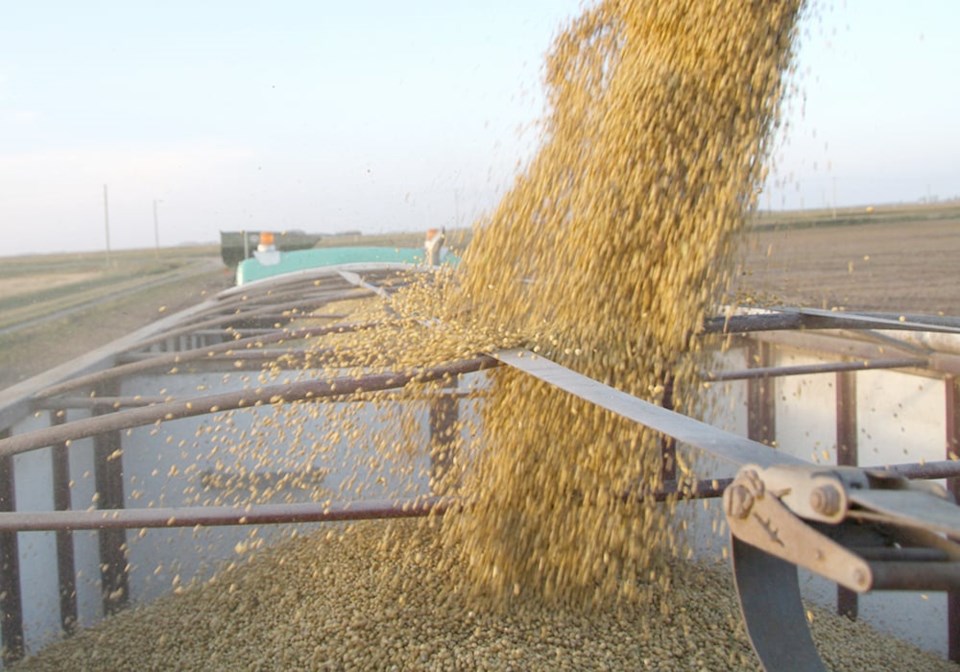SASKATOON — The world will be awash in soybeans in 2024-25, and that could be an anchor on canola prices, say analysts.
The International Grains Council is forecasting 75.4 million tonnes of global soybean carryout, excluding China.
That would be 13 per cent more than last year and 31 per cent above the previous five-year average.
“In the absence of any weather events, these heavy stocks are likely to keep pressure on soybean prices,” Helen Plant, senior analyst with the United Kingdom’s Agricultural and Horticulture Development Board, said in a recent grain market report.
“The extent of the impact on (canola) prices will depend on prospects for the 2024-25 (canola) crops.”
Canola/rapeseed planting is expected to be down 3.1 per cent in Canada and 3.6 per cent in the European Union, two regions that accounted for 44 per cent of global production of the crop last year.
Rich Nelson, chief strategist with Allendale Inc., agrees with the premise that global soybean stocks are on the rise unless there is some adverse weather event.
“It’s certainly part of why we’re seeing a lower price environment,” he said.
However, prices are probably not low enough, considering how heavy global stocks could be. The stocks outlook calls for a November futures prices of US$10.80 per bushel, but the price was about $1 higher than that as of April 24.
“I would caution, though, that’s kind of normal,” said Nelson.
“That’s what we do in spring and summer until we figure out what type of supplies we do have.”
It’s probably a rational approach for the market to take, considering there are valid weather concerns for the U.S. crop.
If the world transitions from an El Nino to a La Nina weather event, it could be dry in the western corn belt and western Plains in June-July-August and hot in the May-June-July period.
However, even if that shaves two to six percent off the national average yield, there will still be bloated ending stocks, which could still put the $10.80 price forecast in the cards, said Nelson.
And that is factoring in the accounting error that recently came to light when it was discovered that China is importing far more soybeans than it is acknowledging.
The country imported 41.5 million tonnes of the crop between October 2023 and March 2024, according to official customs data.
Oil World believes the real number is 47.4 million tonnes.
“We consider the reported imports of U.S. soybeans to be incomplete and assume that actual imports were approximately six million tonnes higher,” the German firm recently reported on its website.
That would be a new record and 2.3 million tonnes above the same period a year ago.
“Our assessment is based on the analysis of data from major exporting countries,” Oil World co-editor Siegfried Falk said in an email.
The U.S. Department of Agriculture is forecasting China will import 105 million tonnes of the oilseed by the end of the 2023-24 crop year.
“The USDA is aware of the differences between import data reported from China and export volumes and has recently announced revisions of the soybean import volumes it is using,” said Falk.
He also noted that many market participants are aware of the growing differences in the two sets of numbers.
“I am thus not expecting a significant impact on the soybean market,” he said.
Falk also does not anticipate that the revisions will have much of an effect on global ending stocks.
“We continue to expect increasing global soybean stocks in 2023-24,” he said.
Nelson’s advice to farmers is to sell their old crop soybeans either for real or on paper right now because in years when there are large supplies of the crop, the basis tends to only appreciate into March and does not continue into the summer months.
He thinks new crop values will continue to rise over the coming weeks because even in heavy supply years there is often moderate price rebounds in the spring.
His advice would be to make some sales if the November contract trades in the $12.50 to $12.70 range because it is likely going to tumble later in the year unless some type of adverse weather story emerges.
Contact [email protected]




